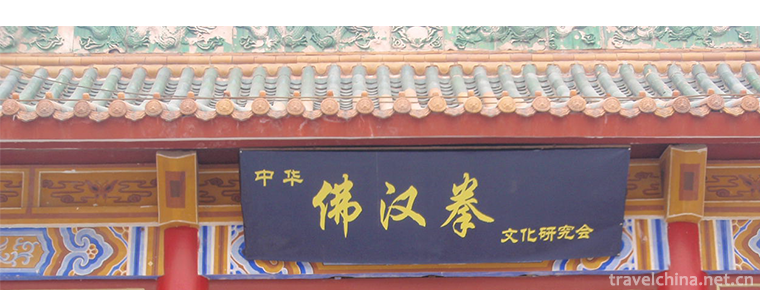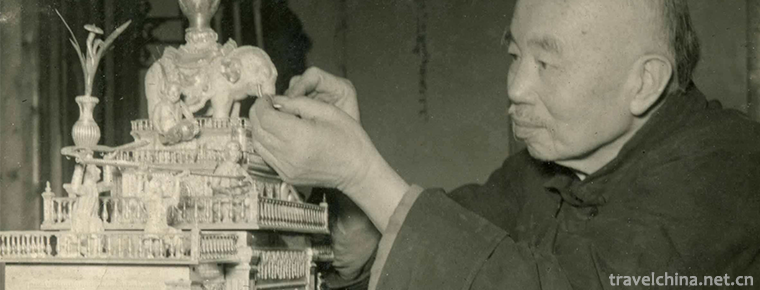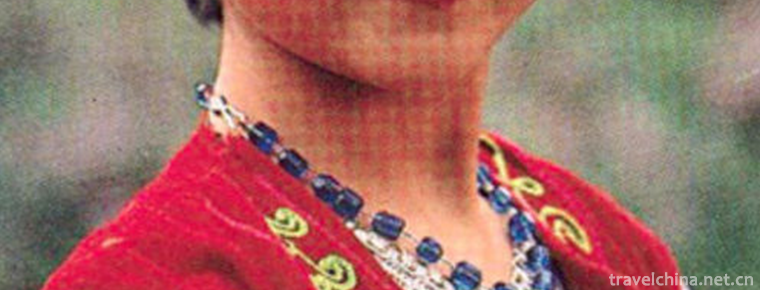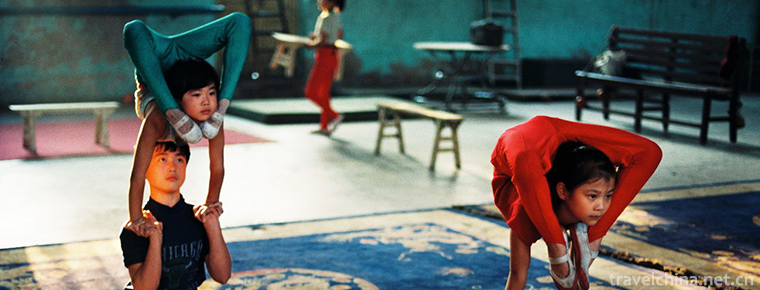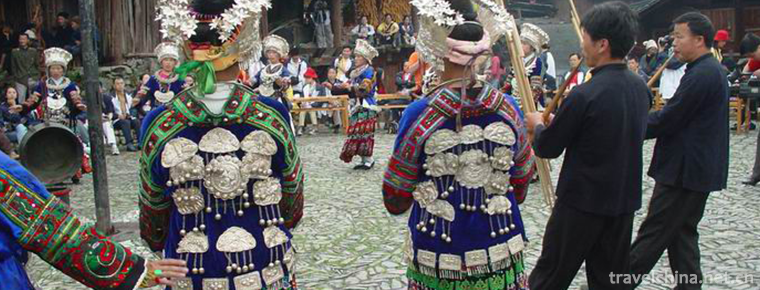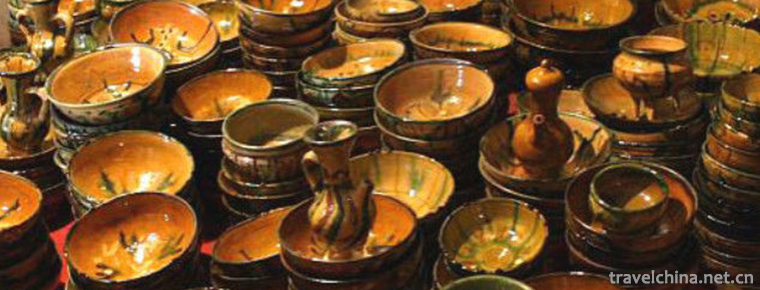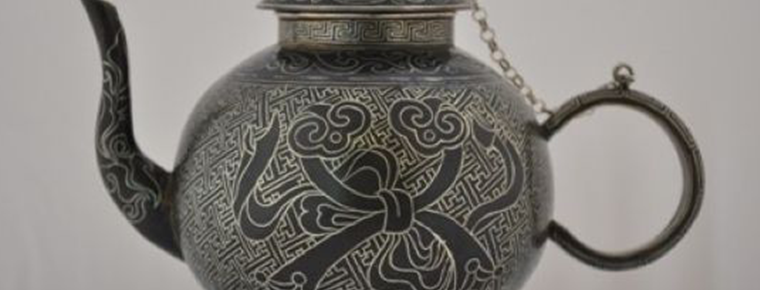Construction Techniques of Wood Construction of Dong Nationality
Construction Techniques of Wood Construction of Dong Nationality
Dong's wood construction and construction skills, the traditional architectural skills of Sanjiang Dong Autonomous County, Guangxi Zhuang Autonomous Region, one of the national intangible cultural heritage.
The construction techniques of Dong's wooden buildings, which started in the Wei and Tang Dynasties, have a history of more than a thousand years. Their wooden buildings include folk houses (wooden buildings), drum towers, wind and rain bridges, Zhaimen, well pavilions, pavilions, etc. There are many kinds of wooden buildings. Taking wind and rain bridges and drum towers as representatives, they still retain some basic characteristics of ancient dry fence buildings.
On May 20, 2006, the construction techniques of Dong's wooden buildings were approved by the State Council of the People's Republic of China and listed in the first batch of national intangible cultural heritage list. The heritage number is_-30.
historical origin
The Dong people's wooden construction techniques can be traced back to the early or even earlier nesting period of the primitive clan society. At that time, the ancestors of the Guizhou-Taiwanese language group had created this kind of "architectural culture" featuring "bamboo-wood structure", "mortise structure", "carved beams and painted buildings". The Dong people inherited it completely.
During the Wei and Tang Dynasties, the Dong nationality had a dry-fence architecture, which has a history of nearly a thousand years. There is a record in Wei Shu Liao Ren about "building blocks according to trees to occupy them, named as dry-fence", which is enough to prove the long history of the Dong nationality's wood-building technology. During this period, the Dong nationality's original construction technology gradually developed and perfected, and finally formed the contemporary wood-building technology. Architectural techniques.
Process characteristics
Species modeling
There are many kinds of wooden structures of Dong nationality, such as folk houses (wooden buildings), drum towers, wind and rain bridges, Zhaimen, well pavilions, pavilions, etc. The wooden structures of Dong nationality depend on mountains and rivers, have beautiful styles and exquisite skills, which reflect the superb construction technology level and spiritual sustenance of Dong craftsmen.
In the timber building of Dong nationality, whether it is a complex drum tower, wind-rain bridge, or a simple Pavilion and hanging-feet building, its shape has its own characteristics. Drum tower rises high and dignified in the residential buildings; Wind-rain bridge overhangs its eaves and stretches across the river; folk houses are scattered and scattered.
Dong craftsmen follow the law of balance, symmetry and harmony in the design of wooden architecture modelling, and pay attention to the use of multiple combinations of straight lines, oblique lines, curves and broken lines, which constitute a balanced, symmetrical, well-organized and perfect architectural modelling art, full of simple, natural, stable and standardized formal aesthetic feeling.
Construction mode
In the wood construction of Dong nationality, architects do not need to draw drawings and make models, but conceive the whole in their minds. They use a self-made small angle ruler, a measuring ruler made of Nanbamboo and a bamboo piece of clean ink pen, and use hand saw, chisel, axe, wooden wound and long-head picks to control hundreds of beams, columns, fangs, boards, eyes, etc. in the "wooden horse". Made from above. Mohist masters are familiar with the names of various components in the building. In order to avoid confusion in the vertical building, they used "Mohist Masters'writing" from generation to generation as a symbol on the drawing.
Pattern decoration
Through artistic means, Dong craftsmen use chiseling, sculpture, painting, overlaying and other techniques to form different patterns in various parts of wooden construction, such as roof ridge, pick-up hand, eaves, pillars, tenons, railings, doors and windows. These patterns are rigorous in composition, regular in combination, balanced and symmetrical, vivid in shape, with skilled knife, exquisite workmanship and smooth lines. Strong decorative effect and artistic appeal.
Multiple functions
Dong's wooden building has obvious practical functions: hanging foot building is economical and applicable, ventilated well, light is sufficient, winter is warm and summer is cool; Drum Tower is the center of villagers'talks, entertainment and leisure; Wind and Rain Bridge is not only convenient for the masses to cross the river, but also shelters the wind and rain. At the same time, Dong's wooden building also has distinct aesthetic functions. Its design, structure and production all reflect Dong's national belief, structure and production. Spiritual pursuit and aesthetic interest.
Technological process
Woodworking tools
Whether they work or build houses, the tools used by the Dong people are basically traditional wooden tools. There are many kinds of wooden tools, the most important of which are saws, axes, planers, drills, ink buckets, rulers and so on. The Dong woodworkers never need drawings in the construction of villages. They can accurately locate and measure with only one ruler and one bucket. After a few artisans have exchanged, they have built. The villagers joined hands in making the plan. The self-made saws, axes, planers, drills and other pink ink came on the scene. Each piece of wood became square and round, each piece of wood became uniform in size, and each piece of wooden frame became solid and solid. In spare time, the Dong carpenters carved the self-made ink buckets into peach, fish and Dragon shapes of different patterns for self-entertainment, as well as for the display of carpentry crafts.
Production process
Production of small samples
Dong craftsmen never used drawings before, but only according to the design requirements, such as the shape and size of the bottom of the drum tower (generally square), the number of eaves (all singular), the number of corners (sometimes the number of upper corner of the drum tower is different from that of lower floor, such as hexagonal or octagonal, of course, there are also four corners) and the requirements of column height to make small samples.
Making measuring rods
The bamboo is split and the edges of the bamboo are slightly smoothed with planer, so that the thorns can not be pierced. On the crossbar, the positions of columns, beams and bents are marked with symbols peculiar to the Dong nationality. On the longitudinal bar, the positions of columns, fangs and other bents are marked.
Material processing
According to the sample, list the material types, quantities and specifications of various components. The material list should list specific items, such as the main pillar, eaves pillar, specifications and sizes, etc. Each component must be included. After that, the material should be inspected to see whether there is decay, worms, scars, splitting and so on. This is the first to ensure the quality of the building. Gateway.
Finally, the material is preliminarily processed (this refers to the processing before drawing lines). The waste material is processed into specifications, such as the width and thickness of the loquat, scraping into specifications of loquat, the diameter of the round material, cutting into specifications of columns, purlin materials, etc. The preliminary processing of beam, loquat and other square components. First, select a bottom surface, scrape the bottom surface straight and smooth, and then process the side after the bottom surface is processed. The preliminary processing of circular members of column and purlin is to take straight, cut round and scrape light.
Line marking
This is a key step in the whole construction process, and it must be done by experienced ink palmers. Generally speaking, workers are not competent for this task. Drawing lines is to mark the dimensions, centerlines, side feet, mortise positions and sizes of components with ink lines on the materials that have been preliminarily processed, and then workers can process them according to the lines. In order to make the whole processing process go smoothly, the Palmer should first have a full grasp of the overall structure of the building. He should be very clear about the location of each component. Only by defining the specific location of each component, can he determine the direction and shape of mortise and tenon. Especially the components at the corner can not be dislocated. After drawing lines, the location must also be clearly marked with bamboo slices. Chu, so that the seats can be aligned when installed, and this helps to prevent the occurrence of missing or duplicated components.
Production component
On the basis of drawing lines, this process is to process the materials of drawing lines into columns, beams, rafters, purlins, rafters and other parts according to the requirements. This process is the focus of the whole wooden building, which takes the longest time, accounting for about three-quarters of the construction process.
Component composition
Installation is the process of assembling the components that have been made-columns, beams, rafters, rafters, purlins and so on. Before carrying out this process, first of all, the components should be inspected in detail to verify that the components have been made according to the requirements, and that there are no components whose dimensions do not meet or are not machined. This is the time to check whether the components are accurate or not. If some components are not made accurately, then it is necessary to inspect them carefully. The assembly process also takes time to repair, which will hinder the smooth assembly. The rafters are fixed to the frame with bamboo nails so that the tiles can be mounted.
Component decoration
The decoration of the roof refers to the decoration of the eaves of buildings. The decorative patterns are closely related to the people's lives of the Dong people, such as horns, birds, cucumbers (a vegetable that the Dong people like very much).
After the above process, a building with Dong's unique characteristics and representing Dong's national character has been successfully completed.
Inheritance and protection
Inheritance value
Dong's wooden construction technology is an important manifestation of Dong's traditional folk culture, represented by wind-rain bridges and drum towers. It has beautiful shape and excellent craftsmanship. The whole wooden construction of Dong is connected by tenons and mortises without a nail, but it is very solid. It not only has high craftsmanship value, but also is an outstanding representative of Dong's folk culture and has high artistic value.
Inheritance status
Dong's wooden construction technology is not only the traditional folk craft of Dong, but also the important embodiment of Dong's culture. It is mainly inherited by folk craftsmen. However, the crisis of the inheritance of contemporary Dong's wooden construction technology is mainly due to the shortage of successors of builders and the lack of wood sources.
Inheriting characters
Yang Xianyu, male, Dong Nationality, born in 1955, is a member of Dong Nationality Autonomous County in Sanjiang, Guangxi. On May 20, 2006, Yang Xianyu was selected as the representative successor of the first batch of state-level intangible cultural heritage projects. He declared in Sanjiang Dong Nationality Autonomous County of Guangxi Zhuang Autonomous Region. The declared project: Dong Nationality's wood construction and construction skills.
Yang Qiu-shi, on December 28, 2017, Yang Xianyu was selected as the representative successor of the fifth batch of national intangible cultural heritage projects. He declared in Sanjiang Dong Autonomous County, Guangxi Zhuang Autonomous Region. The declared project: Dong's wood construction and construction skills.
protective measures
In 2013, the People's Committee of Guangxi Zhuang Autonomous Region and the District Culture Federation jointly organized the "Guizhou Gulou Fengyuqiao Advanced Seminar for Technical Heritages" co-sponsored by the District Folk Artists Association and the Liping County Bureau of Ethnic and Religious Affairs. More than 40 technical heritages of Gulou and Fengyuqiao from various districts and counties participated in the training activities. Experts, scholars and craftsmen, such as experts in ancient ethnic architecture and folk artists in Guangxi Province, trained on the theme of "the inheritance and protection of drum towers and wind-rain bridges".
In 2001, Yang Xianyu, the inheritor of Dong's wooden structure building technology, founded a company. By 2018, nearly 300 apprentices had been recruited. Through the model of "company + engineering + apprenticeship + inheritance", more new generation master of Mohism had been trained.
social influence
Honorary commendation
Chengyang Yongji Bridge in Chengyang Bazhai, Sanjiang Dong Autonomous County, is a representative work of the Dong wooden structure building, also known as Chengyang Bridge. It was built in 1912. It combines bridge, corridor and pavilion. It is the best-preserved and largest wind-rain bridge. Because of its unique architectural style, exquisite craftsmanship is listed as the key cultural relics protection unit in the country.
Important exhibition
On August 24, 2018, the works of Fengyuqiao, made by the inheritors of Dong's wooden structure building techniques, appeared in the exhibition of Guangxi arts and crafts, tourism crafts and master's fine works.
Social application
On December 23, 2017, Yang Xianyu, the inheritor of Dong's wooden construction techniques, and his disciples maintained Sanjiang Dong Folk Art Museum.
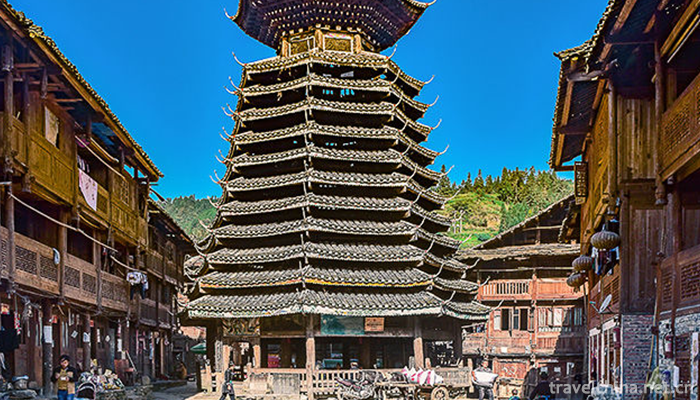
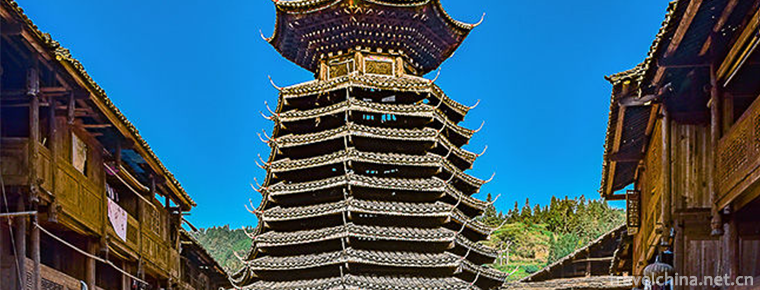
Construction Techniques of Wood Construction of Dong Nationality
-
Wuying National Forest Park
Wuying National Forest Park is located in Wuying District, Yichun City, Heilongjiang Province, about 19 kilometers away from the urban area. It is a concentrated protected area of Korean pine in China
Views: 305 Time 2018-12-22 -
Saint Sophia Cathedral in Harbin
St. Sophia Church is located in Sophia Square, Daoli District, Harbin City, Heilongjiang Province, China. It is a Byzantine-style Orthodox Church built in 1907
Views: 203 Time 2019-02-08 -
Buddha Han boxing
Fohan boxing is also known as Fohan Chuan, commonly known as Buddhist boxing. It is a kind of traditional Chinese martial arts. This boxing originated in Shaolin Temple
Views: 353 Time 2019-04-29 -
Ancient Clock Repair Skills
Behind the Cining Palace in the Palace Museum of Beijing, there is a row of red pillars and grey tiles. A group of "craftsmen" have been dealing with the treasures of the deep palace
Views: 146 Time 2019-05-01 -
Kazakh Costume
Kazakh people are characterized by pastoral nomadic culture. Their clothes are easy to ride. Their national clothes are mostly made of sheep's skin, fox's skin, deer's skin and wolf's skin, reflecting
Views: 230 Time 2019-05-02 -
Liaocheng acrobatics
Liaocheng acrobatics is a traditional folk acrobatics art in Shandong Province. Liaocheng is one of the birthplaces of Chinese acrobatics. In the late Neolithic period, Liaocheng was the main area whe
Views: 179 Time 2019-05-13 -
Bronze drum dance
Tonggu dance is one of the most popular and influential ancient dances among the Zhuang and Yi people in Wenshan Zhuang and Miao Autonomous Prefecture of Yunnan Province. It is distributed in Zhuang a
Views: 109 Time 2019-06-21 -
Uygur moulding earthenware firing
Uygur moulding pottery has a history of more than two thousand years. After the middle of the ninth century, Uygur ancestors moved westward to the vicinity of the Tarim Basin, inherited the pottery ma
Views: 208 Time 2019-06-26 -
Production Techniques of Black Copper Walking Silver
The process of making silver from black copper is very complicated. Usually, it has to go through nearly 20 processes, such as refining copper, blanking, pattern carving, silver walking, forming, poli
Views: 166 Time 2019-06-29 -
Legend of Yao
The legend of Yao is one of the local folklores in Jiangxian County, Shanxi Province. Yao is the Saint King of ancient Chinese legend. It is said that later generations named him Tao Tang and surnamed
Views: 100 Time 2019-07-11 -
Anqing Normal University
Anqing Normal University (Anqing Normal University), abbreviation of Anqing Normal University (AQNU), is located at National historical and cultural city Anhui Province Anqing City It is directly subo
Views: 96 Time 2019-11-07 -
Chinese Qiang Museum
Qiang museum is a local ethnic Museum, located in the south of Qiangxing street in Maoxian county. It was officially opened in 1988 when the Qiang traditional festival "Qiang calendar year". It is the only Qiang Museum in China.
Views: 112 Time 2020-11-06


